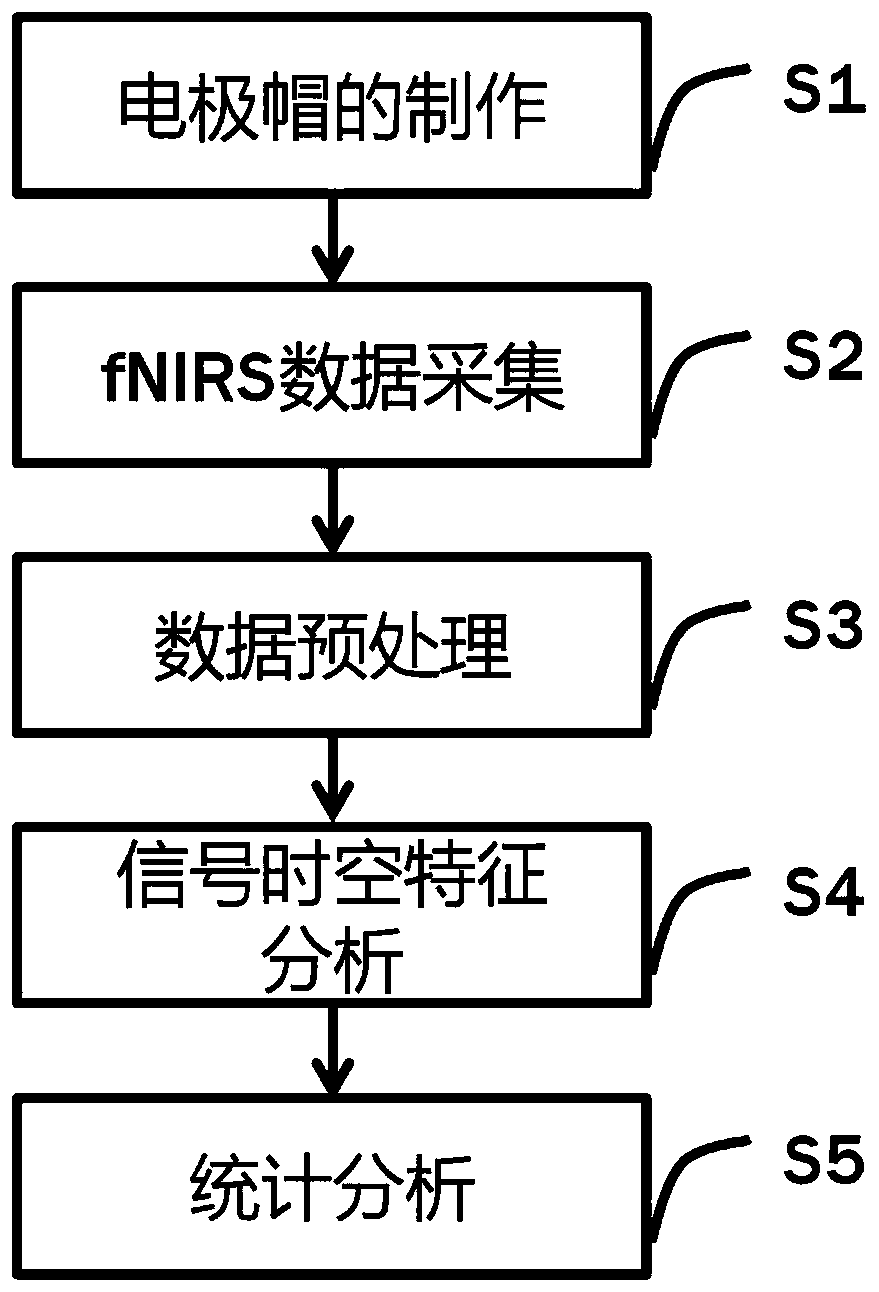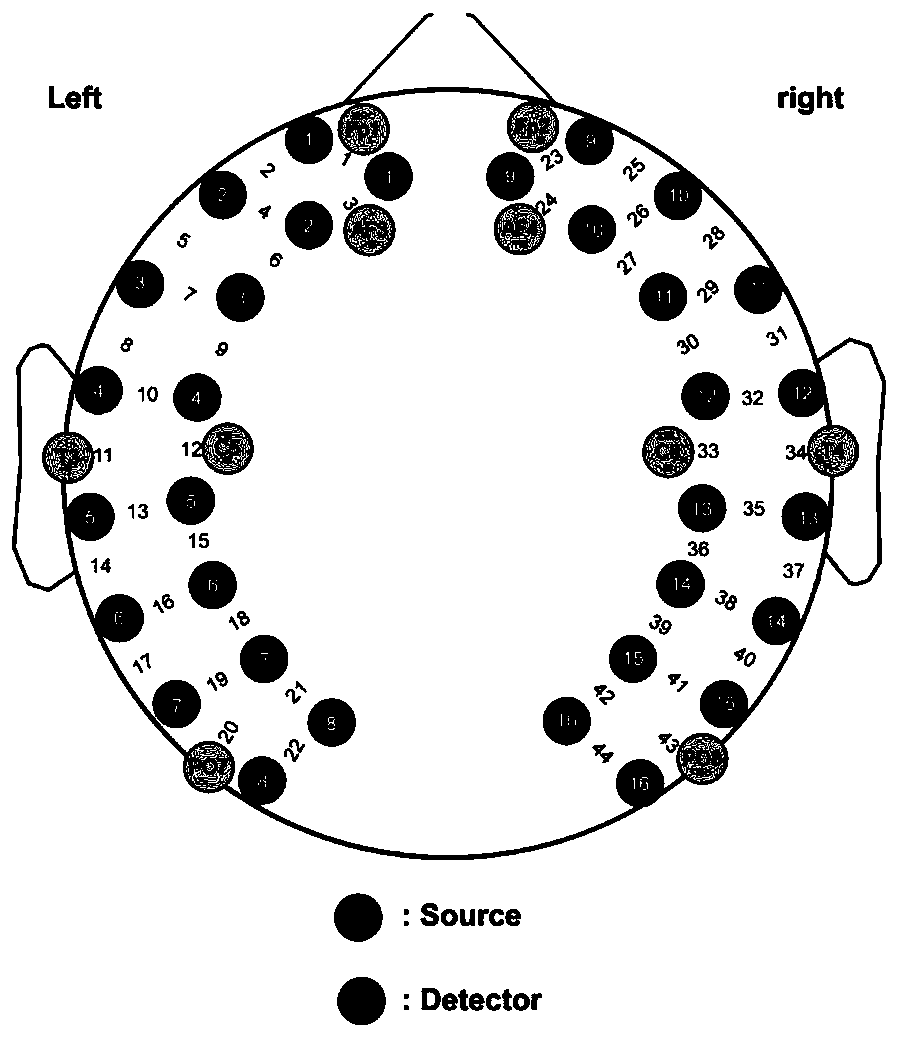Time-space characteristic analysis method for near-infrared brain imaging signals of children with autism spectrum disorder
An analysis method and a technology of spatial characteristics, applied in medical imaging, medical science, telemetry patient monitoring, etc., can solve the problems of poor time resolution, difficulty in realization, and failure of fMRI signal acquisition, and achieve wide applicability, simple structure, The effect of superior performance
- Summary
- Abstract
- Description
- Claims
- Application Information
AI Technical Summary
Problems solved by technology
Method used
Image
Examples
Embodiment Construction
[0027] The technical solution of the present invention will be described in detail below in conjunction with the drawings and embodiments. The present invention will be further described in detail in combination with specific implementation cases, and it should be noted that the embodiments are for explaining rather than limiting the present invention.
[0028] Such as figure 1 As shown, the present invention provides a method for analyzing spatio-temporal characteristics of near-infrared brain imaging signals for children with autism spectrum disorders. The realization of the method includes the production of electrode caps, fNIRS data collection, data preprocessing, spatio-temporal signal analysis, and statistical analysis. .
[0029] The first step is the fabrication of the electrode cap.
[0030] Based on the swimming cap, self-made ring-shaped electrode caps for brain signal collection are used to fix the near-infrared emitter (emitter probe) and detector (detector prob...
PUM
 Login to View More
Login to View More Abstract
Description
Claims
Application Information
 Login to View More
Login to View More - R&D
- Intellectual Property
- Life Sciences
- Materials
- Tech Scout
- Unparalleled Data Quality
- Higher Quality Content
- 60% Fewer Hallucinations
Browse by: Latest US Patents, China's latest patents, Technical Efficacy Thesaurus, Application Domain, Technology Topic, Popular Technical Reports.
© 2025 PatSnap. All rights reserved.Legal|Privacy policy|Modern Slavery Act Transparency Statement|Sitemap|About US| Contact US: help@patsnap.com


